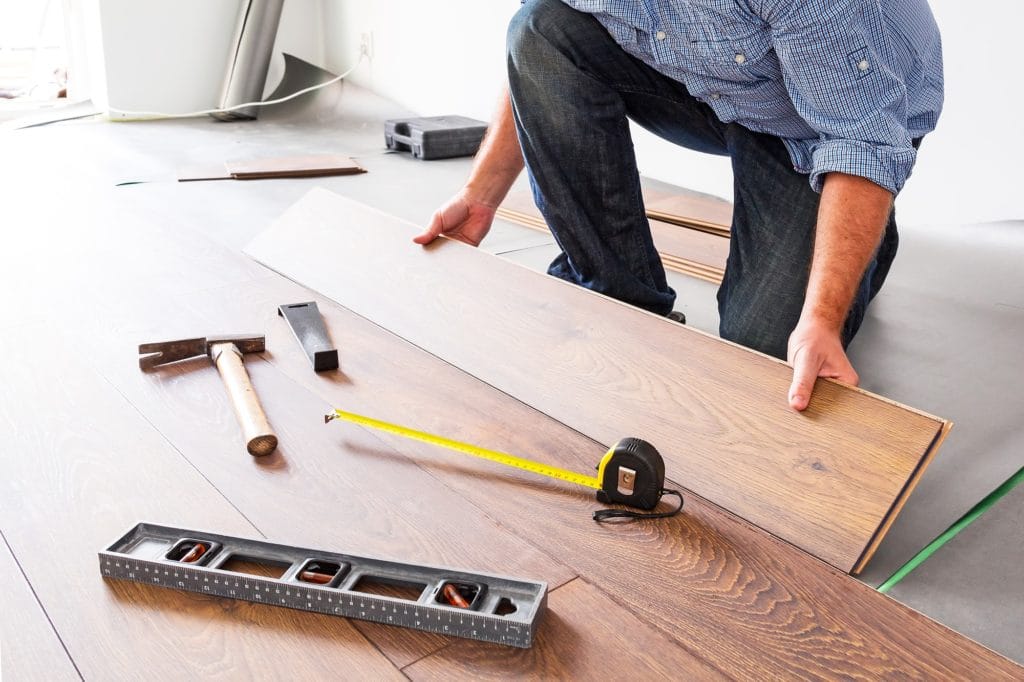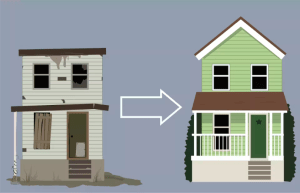When renovating or preparing a rental it can be hard to find the most profitable rental upgrades — that sweet spot between renovating a property and over-improving it. Knowing where to draw the line on property improvements is difficult because it can have a real impact on both its cash flow and improved value.
Whether you are making some minor changes or flipping an entire house, there are several cost factors to consider including those related to marketability, taxation, and even return on investment.
Home Improvement Industry Growth
Recent data suggests the home improvement industry has grown tremendously, in part as a response to the COVID-19 pandemic. In Ontario alone, homeowners spend around $13,603 in home improvements.1 While this might not directly translate to rental markets, it is a broad indication that Canadian’s desire housing that has some quality to it.
Nevertheless, it’s important to let the data do the talking before committing to a (potentially) expensive renovation project. Ask yourself what the overall cost vs the added value is? Does the scope of work fall into your repertoire, or do you need to hire out?
If you are having difficulty deciding just how much money, time, and effort to put into improving your rental property, keep reading.
Understand Your Target Market
It’s true that improving your property has a direct impact on its overall value, but there are also a few implications that can stem from completing excessive improvements.
Local Market Dynamics
For starters, you must think about how your property fits into the local market as a whole. Doing too much could result in an over improvement, leaving your property outside what is normal for your given market.
Over improved properties make it challenging for industry professionals to find comparable when you go to either sell your property or obtain financing.
Renter Considerations
Another market consideration is your average renter. As you complete your rehab or renovations, your property will be more desirable. But this can also mean you can charge higher rents.
As rents go up, understand it can shrink the pool of renters who can afford to rent from you. Although the quality of renters may also improve, it’s something you want to note before you start any large improvement projects.
Focus on Improvements with the Highest Return
Whether you are trying to knock out a few minor improvements over time or flipping an entire house, it’s important to focus on the projects that will give you the best bang for your buck.
Cost-to-Value Ratios
There are certainly improvements that net you a higher return than others. For example, kitchens tend to have quite a large cost-to-value ratio. Exterior renovations like adding a deck or pool are less likely to improve your property’s value the least.2
If you want to focus on items with a higher-than-average return on investment, consider improving bathrooms, windows, and flooring. Even if you are on a budget, a good coat of paint goes a long way, with an average 60% return on your investment.3
Consider the Tax Implications
Before you complete any work on your property, it’s important to distinguish whether it would be considered maintenance or a capital improvement.
While the government allows certain deductions to lower the tax liability on your rental income, not all expenses qualify. Specifically, the Canada Revenue Agency (CRA) has a clear distinction between current and capital expenses.
Current Expenses
Current expenses are those considered to go toward the maintenance, repair, and upkeep of a property to its original condition.4 This is different from a capital improvement which is work that adds value to the property, taking it beyond its original state.4
Replacing your roof is a good example. While many may consider it a capital expense, it’s ordinarily a current expense. Whereas something like putting an addition on your property or adding a new deck could be considered capital expenses.
Capital Expenses and Depreciation
Most capital expenses increase the value of your home thereby increasing your tax liability. However, they can be depreciated and claimed as a deduction on your taxes.
It’s also important to note that large scale construction or rehabs also have different tax implications. Deducting soft costs, like mortgage interest and property taxes, can be restricted (or even unallowable) until the completion of your project.4
Deciding the Right Time to Outsource
Deciding the scope of your project and which improvements take priority is important but choosing whether to do the work yourself or hire out is also a critical decision.
There’s no set number that distinguishes when it is or isn’t the right time to hire out — you should consider your own skills, time, and budget as part of the decision.
DIY vs. Contractor
In most situations, it’s generally more cost effective to complete basic maintenance work yourself if you have a knack or interest for DIY work. Many of the most common maintenance issues in Windsor are relatively simple.
As projects get greater in scope, hiring a contractor becomes more relevant. You should consider if you have the relevant skills necessary to complete the improvements in a skillful manner. It’s also important to consider your overall budget.
Although the cost may be greater, having the work completed by an expert professional should ensure no code violations and that the improvement will last (or at least be covered under warranty).
Selecting the Right Contractor
The downside is that hiring the wrong contractor means you may have to spend more time controlling the process in terms of managing costs and deadlines.
If you do hire out, it’s important to leverage your professional network to find the best vendor for the job. You should also do your own research.
Look for reviews and feedback from the community and past clients. Once you have a preferred vendor, look to add them to your network for future projects. Who knows, maybe they will offer you a deal if you continuously feed them work on future projects.
Opportunity Cost
One last point to consider is opportunity cost. Let’s say you can do the work yourself, would your time be better suited looking for your next investment opportunity or rehabbing the property? Your time is valuable and should be considered as you weigh your options.
Budget for Overruns
While it may be more cost effective to complete small scale projects on your own, if you do decide to hire a professional you should consider budgeting in a buffer for overruns and carrying costs. When budgeting for maintenance costs, allocating an extra 20% is fairly conservative.
Conclusion
Navigating the realm of rental property upgrades and renovations requires a delicate balance to ensure profitability and market relevance. Understanding local market dynamics and renter considerations is crucial to avoid over-improvement pitfalls. Focus on projects with high cost-to-value ratios.
In the ever-evolving landscape of rental property management, strategic decision-making remains key to maximizing returns and minimizing risks. Any decision to DIY or hire a contractor should be based on project scope, skills, and budget.
Sources
- Drah, H. 2022, January 23. 18 Canadian Home Improvement Industry Statistics for 2022.
- Remodeling. 2018, July 6. Canadian Survey Compares Added Value of Nine Renovation Projects.
- RE/MAX Canada. 2021, March 12. The Best Home Renovations for the Biggest ROI.
- Canadian Revenue Agency. 2024, January 20. Current expenses or capital expenses.






